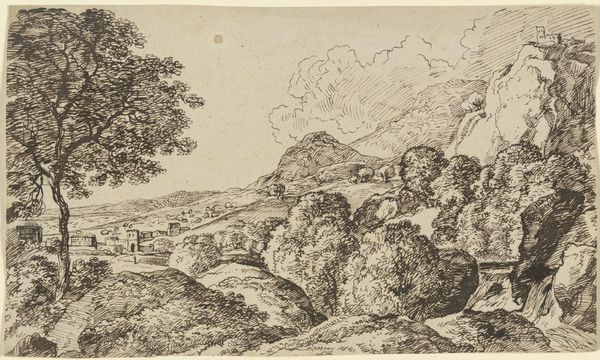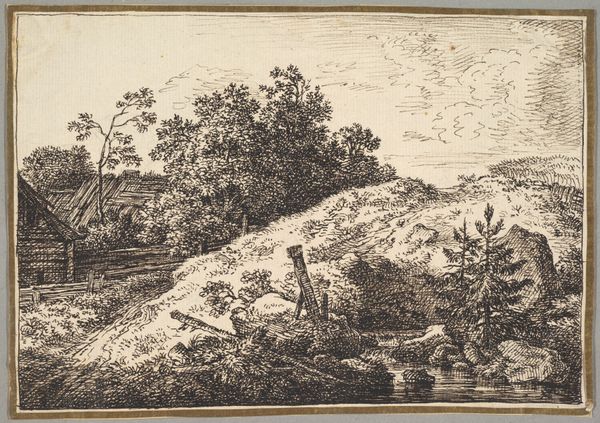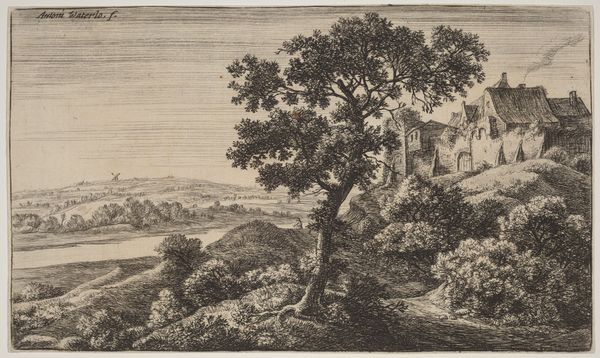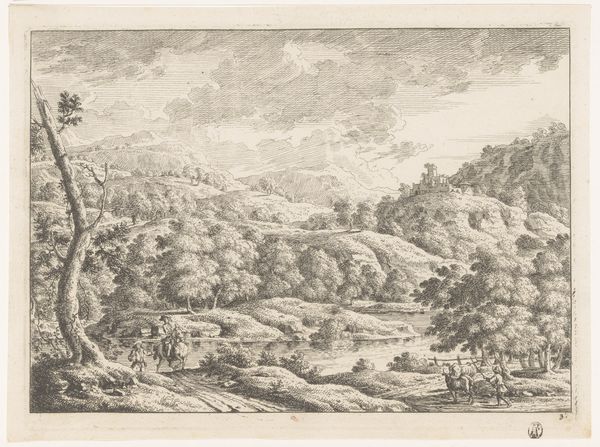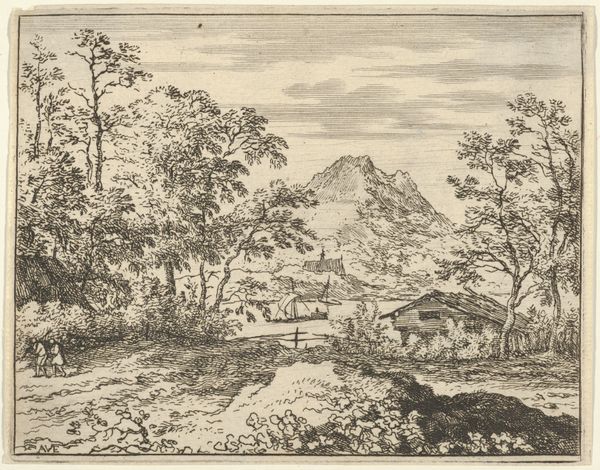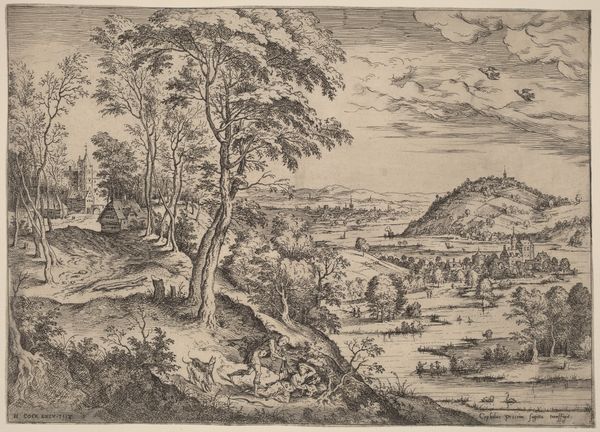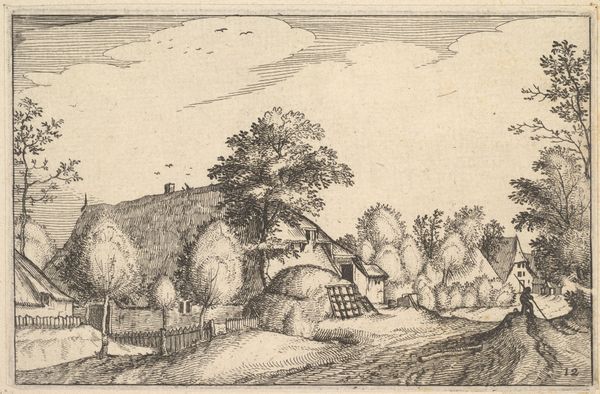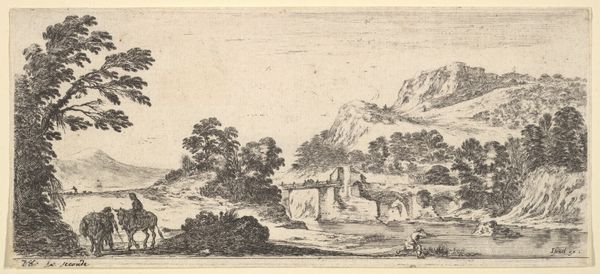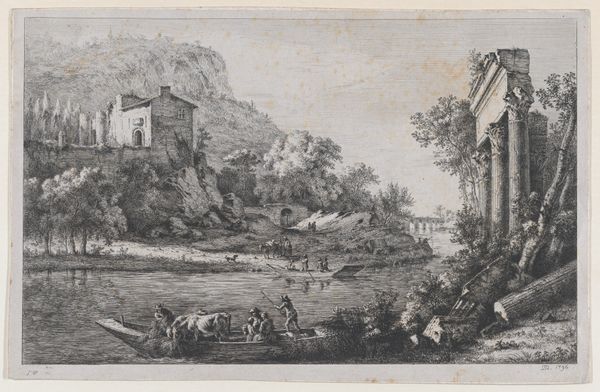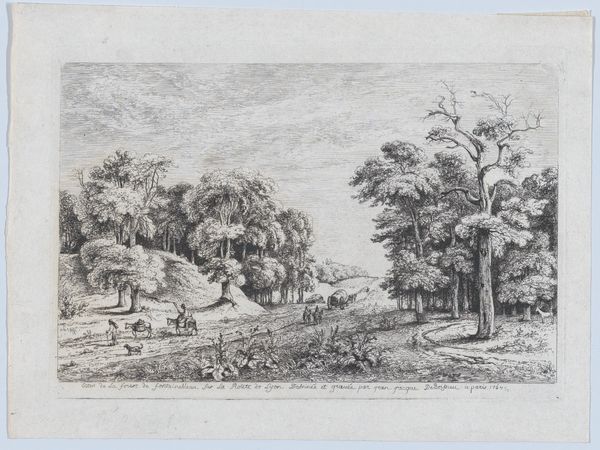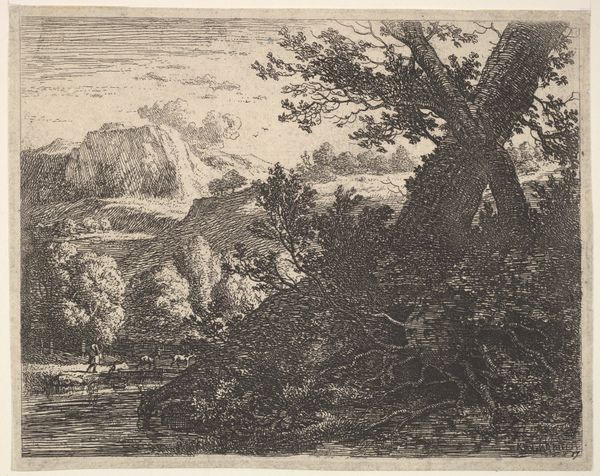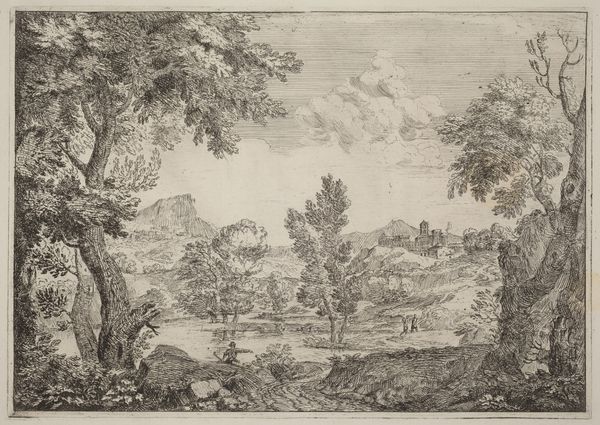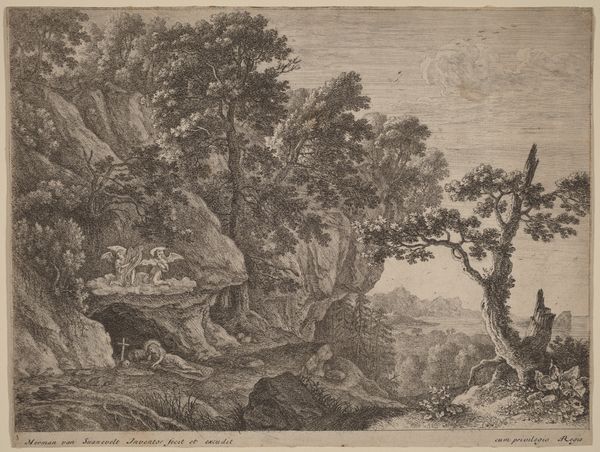
print, etching
#
baroque
# print
#
etching
#
landscape
Dimensions: plate: 12 x 20.7 cm (4 3/4 x 8 1/8 in.) sheet: 12.6 x 21.2 cm (4 15/16 x 8 3/8 in.)
Copyright: National Gallery of Art: CC0 1.0
Anthonie Waterloo created this print, "Watermill at the Foot of a Hill," using etching, a printmaking technique, sometime in the 17th century. Etching involves coating a metal plate with a waxy, acid-resistant substance called a ground. The artist then draws through the ground, exposing the metal beneath. When the plate is immersed in acid, the exposed lines are "bitten," creating grooves. Ink is then applied to the plate, filling these grooves, and the surface is wiped clean. Finally, the plate is pressed onto paper, transferring the ink and creating the print. The fine lines and details we see here are a direct result of this meticulous process. Waterloo’s skill is evident in the way he captures the textures of the landscape, from the rough bark of the trees to the smooth surface of the water. Consider too, the way he's represented the mill; a structure devoted to labor, harnessing the flow of water to grind grain. In this image, the built environment is shown in harmony with nature. Thinking about the materials and processes behind this print encourages us to appreciate the artistry and labor involved. It also prompts us to consider the social and economic contexts in which art is created and consumed.
Comments
No comments
Be the first to comment and join the conversation on the ultimate creative platform.
